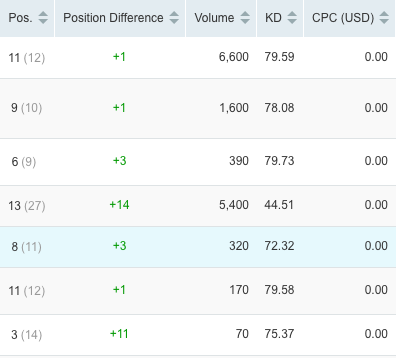“Data-driven” is everyone’s favorite adjective these days. Mapping actions against data helps companies affix a tangible value to their decisions. In the world of tech PR, the process of showing value through data can prove to be a challenge. This post is meant to offer insight into ways we can better assess the value of public relations.
First, we must dispel a common myth: PR results are fluff because they are measured by things like intuition or good feelings about a piece of coverage or amount of coverage. In fact, placing a piece of coverage represents the intersection of PR’s relationship-building prowess and data-driven capabilities. Though often thought of as a right-brained creative-only industry, PR actually offers a combination of both hemispheres’ abilities.
Once the relationship we have cultivated over months, even years, of conversation, bears the fruit of our brainstorming and story creation (right brain), we can begin to understand how that article impacts our clients’ businesses and sales funnels (left brain). Technology exists that helps us better understand the impact of earned media; we should use it.
Google Analytics Is Your Friend
PR is a top-of-the-funnel marketing tactic. Its goal is to drive awareness by putting a company’s name in front of as many eyeballs as possible. Those eyeballs manifest themselves in data from in website visits, which eventually lead to sales conversions. Check out the example, below:
The traffic spikes represent site visits from people who came to the website via programmableweb.com. Why did ProgrammableWeb send people to this client’s website? Because of a piece of earned media: an article — the result of a PR relationship with an editor or writer at the publication and a story idea — that mentioned the client company in question.
Most of your clients will have goals set up related to website traffic and a monetary value assigned to those goals. Let’s say a goal is 1,000 website visits and the monetary value assigned to every 1,000 visits is $2,000. At the end of each month, if earned media placements garner 5,000 site visits, that’s a $10,000 value attributed to earned media due to PR. (B2B sales cycles are long, so your clients’ goals will vary drastically from company to company. The figures above are arbitrary, to explain a point. Google Analytics offers any number of goals that clients may opt to use instead of site visits.)
Search Rankings Show Progress
Backlinks — links on other webpages that direct readers back to your site — are the most, or among the most, important factors for ranking higher on Google search results. When you consider that more than 60 percent of traffic comes from links on the first three pages of Google, elevating your clients’ search rankings offers a clear pathway to more website traffic.
Every time another website has a link that points back to your client’s site, it will help your client move up Google’s search rankings. When those links appear on highly-touted sites, such as Forbes.com and NYTimes.com, it helps your client’s cause even more. In the past, if a site was deemed spammy by Google’s algorithms, site owners had to wait years until the next update might deem them legitimate. Backlinks from spammy sites would, in turn, hurt your client’s website until the next algorithm update. No longer! Penguin (Google’s spam filter algorithm) 4.0 now makes changes in real time. The latest update is even more of reason to continue pursuing backlinks.
Take Those Rankings One Step at a Time
Search engine ranking is helpful if people are searching for your client’s name directly. But, before you get to a point where people are Googling a company name, you will often have to build awareness by focusing on specific search terms.
Let’s say your client wants to show up in the first few results when someone searches “big data analytics.” You can help drive upward movement by creating content on a client’s site that discusses “big data analytics” and related terms. The image below depicts the change in search term rankings for an anonymous client:
You can see that this client has focused on raising its rankings on an often-searched for term. They’ve moved up 14 positions for the keyword that people search for 5,400 times per month on average. As you work to generate content — on blogs, whitepapers, landing pages, even social media — you can track the movement of your client’s ranking for given terms compared to their top competitors.
Earned Media Is Just the Beginning
You can see now how media coverage is just the tip of the PR iceberg. Every time a client garners coverage, it helps the company move up in search results. Every time someone journeys to the website from that publication, the media placement is paying off. When you spend time optimizing content with specific keywords, it will help your build your client’s visibility.
Today we have tools to help measure this progress. Some, you can purchase on your own. Others, like Google Analytics, you’ll have to insist on clients opening up to you. Don’t let share of voice and total number of published pieces represent your entire worth. PR goes far beyond those numbers and can impact the public’s awareness of a client long after you earn media placement. Data-driven public relations is here, and it will help you and your clients put a more appropriate value on the work you’re performing.


